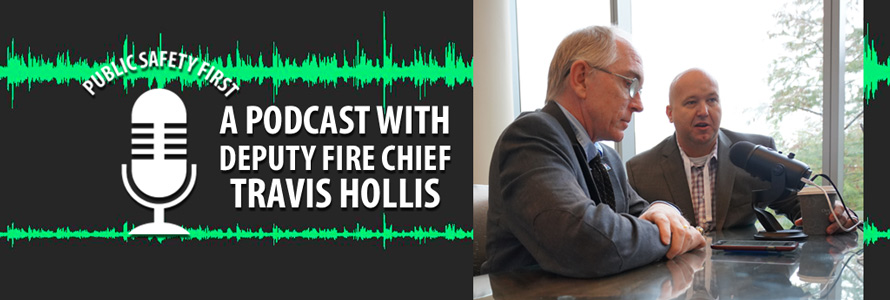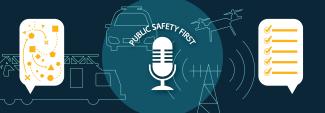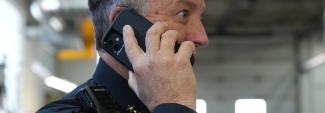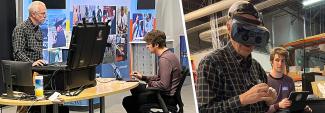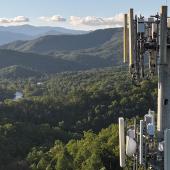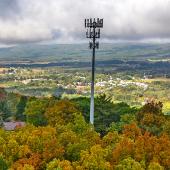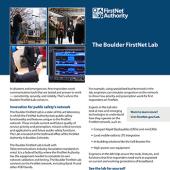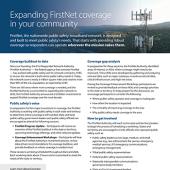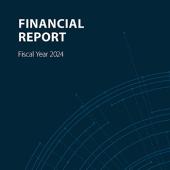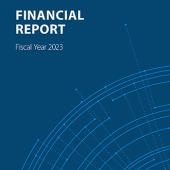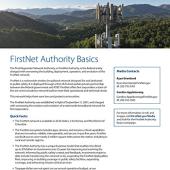Summary
Deputy Chief Travis Hollis of the Rogers Fire Department (AR) speaks with guest host Michael Varney about why a city in “Tornado Alley” decided to transition to FirstNet and what first responders have experienced since adopting FirstNet. He also shares thoughts on the future of public safety communications and advanced technologies like the Internet of Life-Saving Things (IoLST).
Guest
Michael Varney
FirstNet Authority Director of the Northeast Region
Chief Travis Hollis
Rogers Fire Department, Arkansas
Transcript
Preview
Narrator: You're listening to the Public Safety First, a podcast to help you learn about the First Responder Network Authority and how you can be part of the future of public safety technology.
And now your host, Dave Buchanan.
Narrator: You're listening to the Public Safety First, a podcast to help you learn about the First Responder Network Authority and how you can be part of the future of public safety technology.
And now your host, Dave Buchanan.
Dave Buchanan: Welcome to the public safety first podcast in today's episode we'll hear from Mike Varney. Mike serves as the Northeast Director for the First Responder Network Authority, and for those of you who haven't had a chance to meet Mike, Mike hails from Maine lives in Connecticut where he's worked for 30 years in the Fire and Rescue Emergency Medical Service profession including 14 years as Fire Chief of the Ellington Volunteer Fire Department. Mike interviews deputy chief Travis Hollis from the Rogers Arkansas Fire Department, where he handles all IT projects for the Fire Department. In this conversation, Mike and Deputy Chief Hollis talk about the Rogers Arkansas impetus for joining FirstNet, they talk about the experience they had, and have had as a FirstNet subscriber for the last four months to talk about the process they used for implementing FirstNet, and they talk about the future capabilities anticipated for Public Safety Comms. Mike and Deputy Chief Hollis had this conversation at the IAFC Fire Rescue International Conference in Dallas Texas.
Michael Varney: Good morning, I’m Michael Varney from the First Responder Network Authority here with Travis Hollis from Arkansas. We’re here at Fire-Rescue International in Dallas Texas. So Travis, would you tell me a little bit about yourself?
Travis Hollis: My name's Travis Hollis I'm the Deputy Chief over at Special Operations and Training with Rogers Fire Department, more importantly I handle essentially all IT technology projects that we face in Rogers.
Michael Varney: How'd you get involved in the fire service, Travis?
Travis Hollis: I guess I got a bit early as a kid, the bug. My grandfather had some friends on the
Tulsa Fire Department. He always wanted my dad to become a Tulsa firefighter so it was really through my grandfather. You know, fast forward to 18, I started at a volunteer department it's progressed into being a career firefighter.
Michael Varney: So I know you're presently a FirstNet subscriber, can you tell us what kind of was the impetus for you guys to want to be able to use that service?
Travis Hollis: Yeah, so we got deployed to the Joplin tornado and May of 2011 and one of the first things that become apparent is we had no communications with the outside. So, everything that we had, we were reduced down to the paper and you know we had all this technology we had mobile data terminals, but they were useless because the network was taken out. So, that kind of put us in a little bit of a panic mode internally for the city. You know, “How are we going to handle this event if it happens in Rogers?” being in tornado alley essentially, being in the south. So we started looking around a few months later Ramsey Bryant Crawford used to be the plain old Fire Chief but he was doing a presentations here at FRI, talking about FirstNet, and was like, “This is something that we need to migrate towards.” FirstNet, you know, they really they really stepped up and you know here we are 2018 and we're about four months it's a subscriber on FirstNet.
Michael Varney: So what would you share with other departments that are thinking about switching over to the FirstNet service?
Travis Hollis: You know with anything, with the deploying new technology, you just don't want to issue that Silver Bullet and vastly roll something out, just in case there's an issue. So one of the things that we did do, is we started with command staff to evaluate and see how it's working and you know once we were printable with that well we did roll it out to the rest of the units, and the rest of the staff members.
Micheal Varney: How has your experience been with FirstNet, and converting over, and using the service?
Travis Hollis: FirstNet makes it very simple, it's simple as changing out a SIM card. So, you know, with the right tools, within you know a matter of two minutes, you're up and going as a FirstNet user. So, it's been fairly seamless.
Michael Varney: So how have you seen communications change over the last five years what would you like it to look like in the future?
Travis Hollis: Yeah so communications, you know, going back to this mobile dial terminals, you know, everybody has a problem with reliability a lot of times, it seems. Just being in a Walmart headquarters area, interstate 49 splits down through our city, and that's the basically the Main Street for Northwest Arkansas. So, at 8 o'clock in the morning and again at 5 o'clock, and even we would start seeing our units on the West side of town, they would lose connectivity. So, I wrote a batch file to ping Google every second to keep that connection live, and what we suspected and then we confirmed from our hypothesis is that they were shedding idle users when there was a heavy use on the network. So, the great thing about since we've migrated to FirstNet is we don't see that issue anymore, we got this steady connection when we need it.
Michael Varney: So when you hear about the Internet of Life Saving Things (IoLST), and that whole, connectivity with sensors, etc., what do you think about leveraging that?
Travis Hollis: You know, as we move forward I can see endless possibilities for Internet of Things, especially life-saving things. You know, my Apple watch here, it knows my heart rhythm so that got me thinking. I can see a day where your watch or your wearable knows that you're having a medical event before you even do. It sends a signal to the dispatch center and next thing you know an amateur fire truck is rolling to your house and knocking on your door saying “Mrs. Jones, your watch detects that you're having a dysrhythmia. Are you okay if we check you out?
Michael Varney: You see in the future using any sensors, or un-manned vehicles in your use? Do you see you being able to leverage that?
Travis Hollis: Oh, absolutely I can see it one day is you pull up and there's a drone is deploys from your truck, and you know, that situational awareness as an incident commander. I see, even to the point of not even issuing radios to right in positions, you issue a cell phone with FirstNet and you have a plug-in for your mic. I see that in our near future, probably less than a decade.
Michael Varney: I know you’ve done a lot of work and the way you get involved in the Fire Service. What makes you keep striving?
Travis Hollis: It's just being a public servant, and you know I think that being a public servant you’ve got to remember that every day, and you put on that uniform it's not going to be heroes. It's not going to be everybody's happy to see you. I mean we're going we're going we're solving people's problems on the worst day of their life and you just got to remember that when you get up every day is you're there to serve.
Michael Varney: I appreciate it.
Travis Hollis: Thank you guys at FirstNet, you’ve been great partners, and like I said, looking forward to what we can do with you in the future.
Narrator: Thanks for listening today. We're excited to have you join our podcast community and make sure to subscribe on iTunes, SoundCloud and YouTube. You can learn more about the First Responder Network Authority at firstnet.gov and learn about FirstNet products and services at firstnet.com


